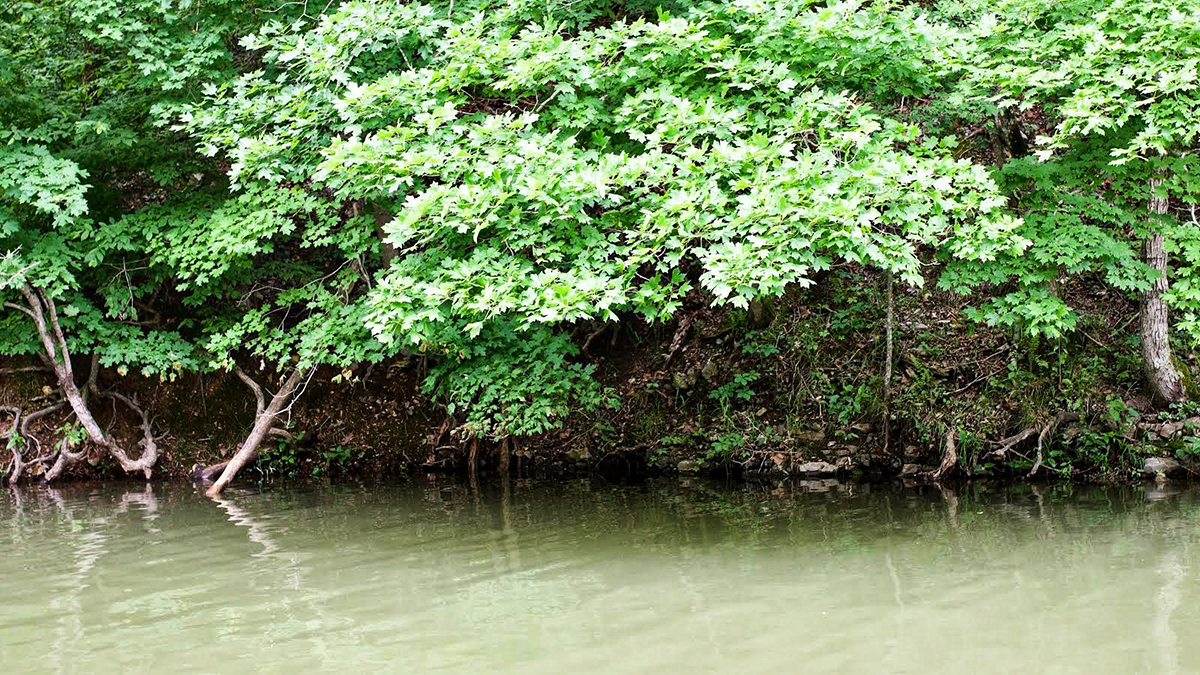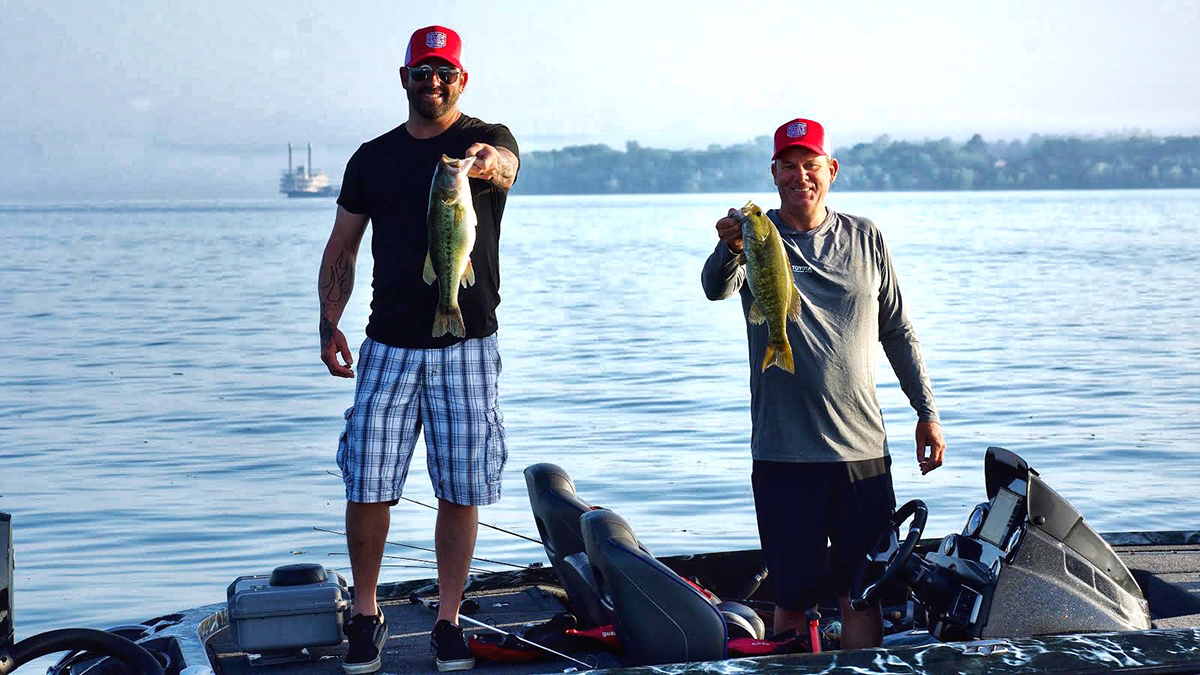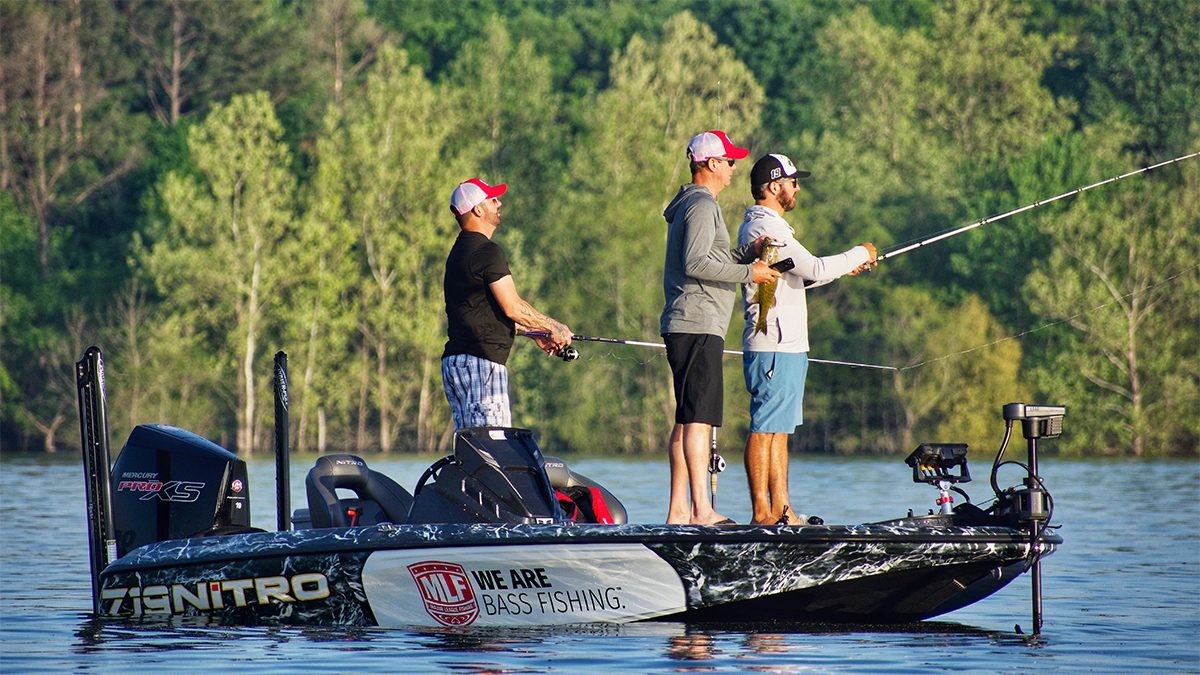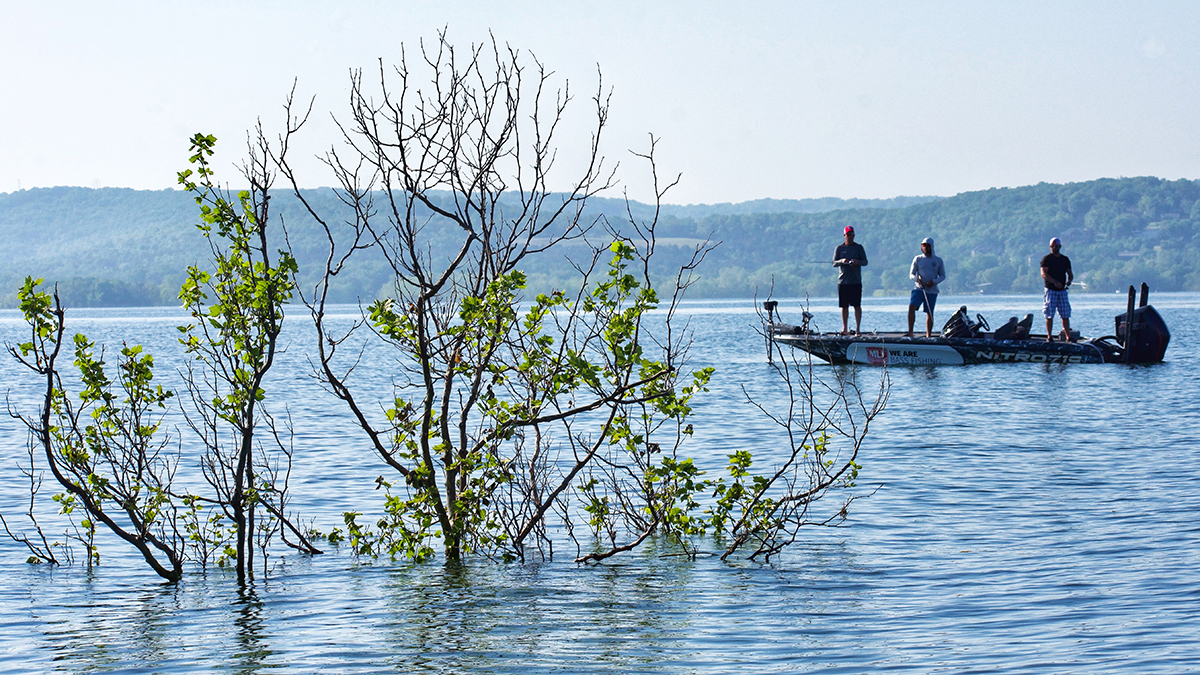Fishing for bass focused on spawning shad can be one of the most rewarding, while simultaneously frustrating patterns in bass fishing. This yearly phenomenon typically occurs near the tail-end of the bass spawn and the action is at its peak during the first hour or two of the morning in lowlight conditions.
If you hit the shad spawn right, the activity is incredible; thousands of baitfish near the top of the water column with schools of bass taking full advantage of this opportunistic occurrence. When it’s like this, it seems like it’s easy to load the boat in a hurry with any bait you throw but the action is notoriously fleeting. Shad won’t spawn all day and the same areas that teemed with life a few minutes before can turn off like a light switch.
I was reminded of this vexation on a recent fishing trip, but thanks to some tips from none other than Kevin VanDam and my own stubbornness, I determined a handful of ways to milk the shad spawn after the initial liveliness had subsided.

Low light game plan
Shade is your friend when trying to “squeeze the rag” and take advantage of remnant activity related to the shad spawn. A few feet of shade offered from a break wall, boat dock, grass line, steep bank or overhanging limbs will draw spawning shad as the sun gets higher in the morning. This prolongs the shad’s activity and bass won’t be far away.
Team Toyota pro Kevin VanDam has targeted bass gorging on spawning shad countless times throughout his career and has learned some nuances of the shad spawn. For KVD, it all starts with having a game plan.
“It’s best to have a plan, a system in place when trying to capitalize on the shad spawn,” VanDam said. “If I know I’m targeting a shad spawn in a tournament, I think about sun angle and spend time running from pocket to pocket looking for spots I can expect to be shaded as the sun gets high. You don’t have time to guess, you need to create a milk run with a bunch of spots within a couple miles of each other.”
The sun rises in the east, which means its morning rays first illuminate the western banks of a lake. VanDam went on to explain he focuses on the eastern side of a pocket or lake went trying to exploit a fleeting shad spawn for this reason. But shade isn’t the only factor VanDam considers.
“Anything that extends low light can prolong activity,” VanDam explained. “Things like stained water, cloud cover and the presence of wind all influence light penetration and can drag out the morning action. And it doesn’t have to be a huge area either. A single overhanging limb casting a twenty-foot area of shade can be a magnet for shad and bass alike.”

Subtle in the strike zone
There is an abundance of lures you can employ to catch bass when the shad spawn is at its peak but as the excitement slows down, your bait selection should become more subtle, too. Aggressive topwaters and fast-moving spinnerbaits may fool bass the first hour, but often aren’t the answer to continued success. I relearned this lesson last weekend on a fishing trip to a new lake with a buddy.
I caught several fish first thing in the morning on a Rebel Pop-R while my friend enjoyed similar success with a Booyah Pad Crasher. As the morning continued, I stopped getting bites and my buddy caught one near 7 pounds. Being the jealous fishing partner that I am, I picked up a frog of my own and started casting. My frog was black, his had a white belly.
I had the occasional blow up but most of them didn’t get the bait while he connected on several more bass that engulfed his lure. It became obvious those fish were keyed in on the white color and we realized we were experiencing the tail-end of the shad spawn.
I went back two days later with a white SPRO Poppin’ Frog 60 tied on and absolutely wrecked them. Once again, I could get bit with a smorgasbord of baits first thing in the morning, but as the sun got high it was all about the white frog or a soft jerkbait. This convinced me it had to be due to the quiet, subtle action of these offerings. KVD weighed in that subtlety is important, but so is the strike zone.
“Just as important as it being subtle is choosing a bait you can keep in the strike zone longer,” VanDam explained. “It’s like you can aggravate those fish into biting by hovering something in the strike zone. This is when I’ll trade the Strike King Burner Spinnerbait, KVD 1.5 Squarebill or Tour Grade Buzzbait for a shad-colored Caffeine Shad or KVD Popping Perch. Something that I can work action into without having to move it quickly. I’ve had a lot of success jerkbaiting in this scenario, too, with a 200 or 300 series KVD Jerkbait.”

Manufacture action
Perhaps the best way to milk the shad spawn is to try and reactivate shad. VanDam is a huge believer in the effectiveness of the HydroWave H2, specifically the spawning bait pattern for reigniting a school of bass targeting spawning shad.
Boat positioning and multiple anglers or baits are other ways VanDam has learned to manufacture action related to a shad spawn. I witnessed this firsthand a couple weeks ago on Table Rock Lake for a sweepstakes fishing trip KVD was part of. The bass and bait were congregated on points and the anglers lit them up the first hour of the morning.
After the sun got high, this bite seemed to completely vanish. But knowing those fish still had to be in these areas, VanDam would attempt to corral shad up against the point or bluff wall using his boat with the HydroWave turned on. When he could tell the baitfish were positioned favorably, he would have everyone in the boat cast to them in unison.
Amazingly, they were able to trigger schools of bass into aggressively blowing up on shad and their topwater baits in sunny, slick conditions. VanDam used all that commotion to set the scene and trick the bass into thinking it was time to feed again.

Adjacent isolated cover
The last tip isn’t so much related to the action of the shad spawn itself, but rather following where bass move to after they’ve taken advantage of their baitfish breakfast. It’s all related to big, obvious pieces of cover in proximity to where you experienced intense shad spawning. Think of this as picking off the scraps of the shad spawn.
While concentrating on a shad spawn I’m always looking for individual pieces of cover where I think bass might pull to following the feeding frenzy. An isolated bush on a point, a big gnarly laydown, a unique patch of grass or a stand-alone dock are all perfect places for a post spawn bass to hang out in early summer afternoons. The more isolated the better.
These are great places to come back to later in the day and flip with a Texas-rigged creature bait like a Zoom Brush Hog, Strike King Game Hawg or a wacky-rigged stick worm when the activity of the morning is nothing but a memory. They are high percentage targets that won’t take you long to fish and are part of pre-established milk run. It’s a last-ditch effort to take advantage of the population of bass found during a shad spawn and get a few extra bites.
Exploiting the shad spawn is one of the best ways to catch bass every year in May and June throughout most of the country. If you’re like me and have struggled to extend the morning magic of this occurrence, put these tactics to the test and have confidence you’ll put more bass in the boat.












